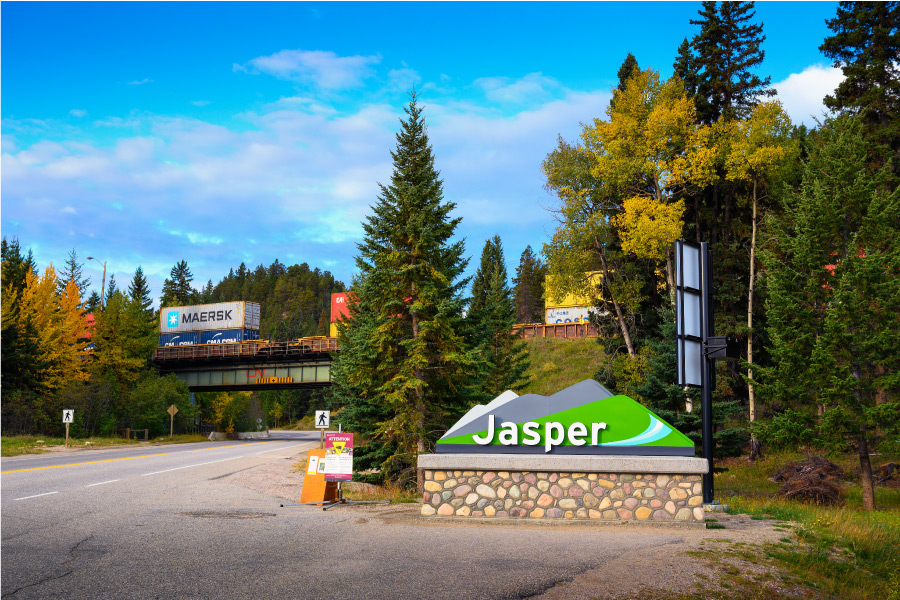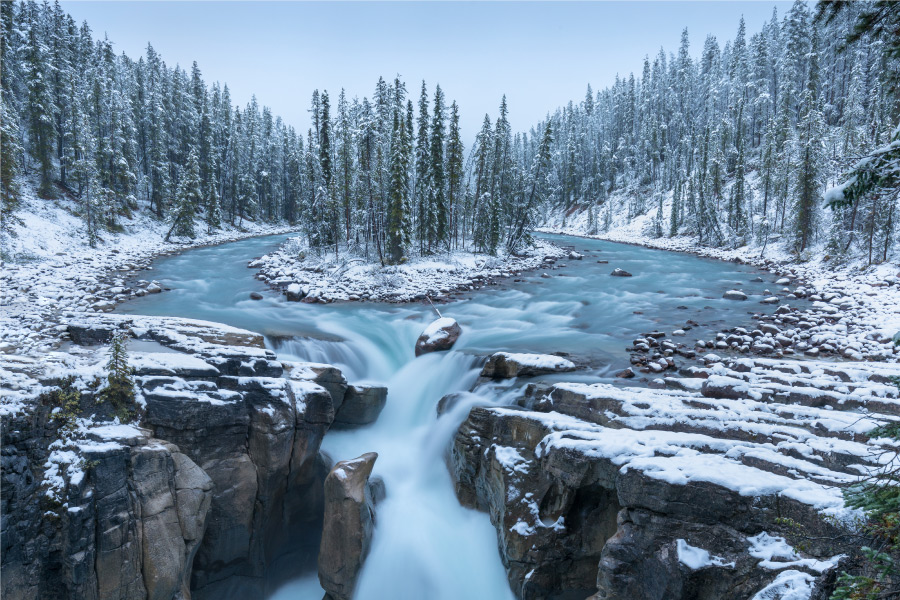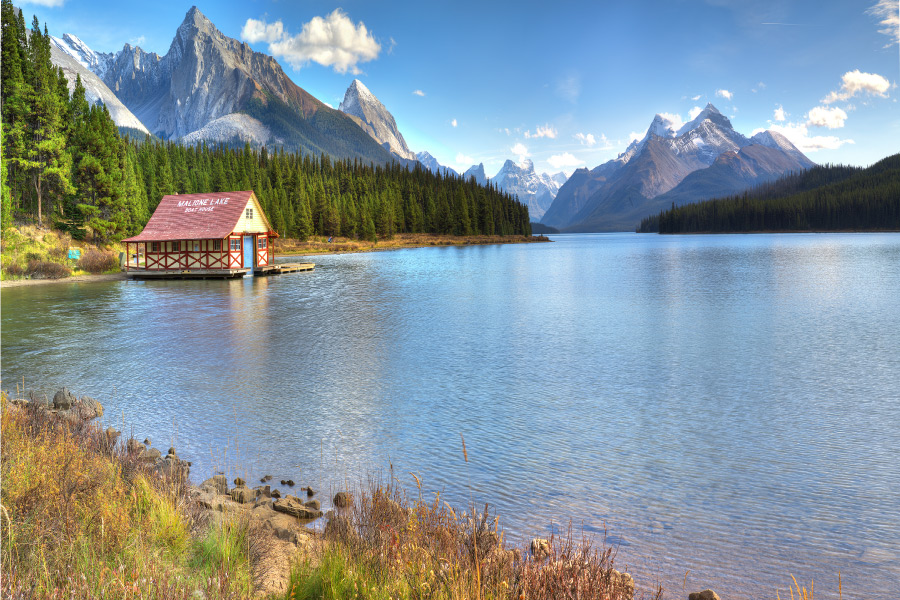A Brief History of Jasper National Park
Jasper National Park was established in 1907, and its history is intertwined with early explorers, fur traders, and the Indigenous peoples who have called the area home for thousands of years. Named after Jasper Hawes, a trading post operator, the park has seen many changes since its inception. Early explorers, such as David Thompson and the North West Company, sought new trade routes through the region, paving the way for the development of trails and railways that would eventually provide access to the park.
Over time, the Canadian government recognized the importance of preserving this unique natural environment, leading to the park’s creation and subsequent designation as a UNESCO World Heritage site in 1984, along with Banff, Yoho, and Kootenay National Parks. The development of infrastructure and visitor facilities, such as campgrounds, hiking trails, and interpretive centers, has made Jasper more accessible to the public while also ensuring the protection of its delicate ecosystems and wildlife habitats.
Getting to Jasper National Park
Jasper National Park is accessible by various modes of transportation, making it a convenient destination for travelers from near and far. The park is located approximately 365 kilometers (227 miles) west of Edmonton, Alberta, and 404 kilometers (251 miles) northwest of Calgary, Alberta. The nearest town, Jasper, serves as the park’s primary hub for accommodations, dining, and visitor services.
By car, you can reach Jasper via Highway 16 (the Yellowhead Highway), which runs east-west through the park. If you prefer a more scenic route, consider taking the Icefields Parkway (Highway 93) from Lake Louise in Banff National Park, which offers stunning views of the surrounding mountain landscapes. Be sure to check road conditions and seasonal closures before embarking on your journey.
For those who prefer to travel by train, VIA Rail offers services from both Edmonton and Vancouver, British Columbia, with a stop in Jasper. Additionally, bus services, such as Sundog Tours and Greyhound, provide connections from nearby cities to Jasper.
Upon arrival, a park entry pass is required for all visitors. Fees vary depending on the length of stay and the type of pass (single, family, or group). You can purchase park passes at park entry gates, Parks Canada visitor centers, or online through the Parks Canada website (https://www.pc.gc.ca/en/pn-np/ab/jasper/visit/tarifs-fees).
Iconic Landscapes and Natural Wonders
Jasper National Park boasts a diverse array of landscapes, encompassing towering mountains, ancient glaciers, pristine lakes, and thundering waterfalls. A visit to this spectacular park would not be complete without experiencing some of its most iconic natural wonders. Maligne Lake, the largest glacially-fed lake in the Canadian Rockies, is a must-see attraction, with its vivid turquoise waters and stunning backdrop of snow-capped peaks. Spirit Island, located on Maligne Lake, is one of the most photographed spots in the park and is accessible by boat tour or canoe. More information on boat tours can be found at the Maligne Lake Tours website (https://www.malignelake.com/).
Another breathtaking sight in Jasper National Park is Athabasca Falls, a powerful waterfall that plunges 23 meters (75 feet) into a canyon below. The falls can be easily accessed from the Icefields Parkway and offer several viewing platforms to safely admire the rushing water.
The Columbia Icefield, one of the largest non-polar icefields in the world, is another awe-inspiring natural feature within the park. The Icefield spans an area of approximately 325 square kilometers (125 square miles) and feeds several glaciers in the region. Visitors can explore the icefield via the Ice Explorer, a specialized vehicle that takes guests onto the Athabasca Glacier, or by visiting the Glacier Skywalk, a glass-floored observation platform overlooking the Sunwapta Valley (https://www.banffjaspercollection.com/attractions/).
Wildlife in Jasper National Park
Jasper National Park is home to an incredible variety of wildlife, from large mammals such as grizzly and black bears, elk, and mountain goats, to smaller creatures like pikas, marmots, and a plethora of bird species. When visiting the park, it’s essential to follow responsible wildlife viewing practices to ensure the safety of both the animals and yourself. Parks Canada offers guidelines for safe wildlife viewing, which can be found on their website (https://www.pc.gc.ca/en/pn-np/ab/jasper/visit/faune-wildlife).
When photographing wildlife, use a telephoto lens to maintain a safe distance and avoid disturbing the animals. Be especially cautious during mating and calving seasons, as animals may be more aggressive or protective during these times. Remember to never feed or approach wildlife, and always give them plenty of space to move freely.
Recreational Activities and Adventures
Jasper National Park offers a wide range of recreational activities and adventures to suit all interests and skill levels. Hiking is one of the most popular activities, with over 1,200 kilometers (745 miles) of trails available. Trails range from short, leisurely walks to challenging backcountry treks. Some popular hiking trails include the Valley of the Five Lakes, Mount Edith Cavell Meadows, and the Sulphur Skyline. A comprehensive list of trails and their descriptions can be found on the Parks Canada website (https://www.pc.gc.ca/en/pn-np/ab/jasper/activ/activ-experience/sentiers-trails).
Mountain biking is another popular activity in the park, with numerous trails suitable for different skill levels. The park also offers opportunities for water-based activities, such as canoeing, kayaking, and fishing. Maligne Lake, Pyramid Lake, and Patricia Lake are popular spots for canoeing and kayaking, while the Athabasca, Maligne, and Snaring Rivers provide excellent fishing opportunities. Be sure to check park regulations and obtain any necessary permits before engaging in these activities.
During the winter months, Jasper transforms into a snowy wonderland, offering activities such as skiing, snowboarding, snowshoeing, and ice climbing. Marmot Basin Ski Area (https://www.skimarmot.com/) is the primary destination for downhill skiing and snowboarding, with its diverse terrain suitable for beginners and experienced skiers alike. For cross-country skiing enthusiasts, the park features over 300 kilometers (186 miles) of groomed trails, with popular routes like the Athabasca Falls Loop and the Pyramid Lake Fire Road.
Snowshoeing is another fantastic way to explore Jasper’s winter landscape, with several trails available for all skill levels. Some popular snowshoeing routes include the Maligne Canyon Loop and the Old Fort Point Loop. Guided snowshoe tours can also be arranged through local outfitters, such as Jasper Adventure Centre (https://www.jasperadventurecentre.com/).
Ice climbing is a more extreme winter activity, attracting experienced climbers from all over the world. Frozen waterfalls and ice-covered cliffs provide thrilling challenges for climbers, with popular spots like Maligne Canyon and Tangle Falls. If you’re new to ice climbing, several guiding companies offer introductory courses and guided climbs, such as Rockaboo Mountain Adventures (https://www.rockaboo.ca/).
Regardless of the season, Jasper National Park offers countless opportunities for adventure and exploration. Whether you’re an experienced outdoor enthusiast or a casual visitor, the park’s stunning landscapes, diverse wildlife, and recreational activities are sure to create unforgettable memories.



